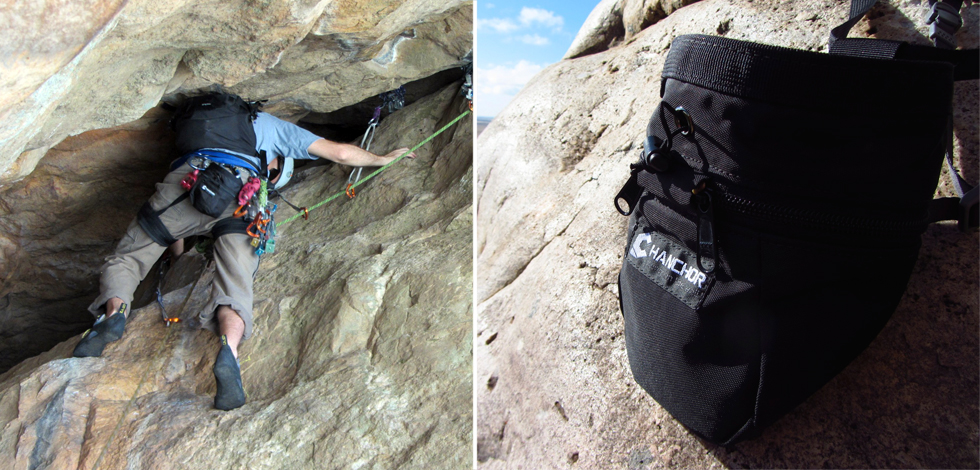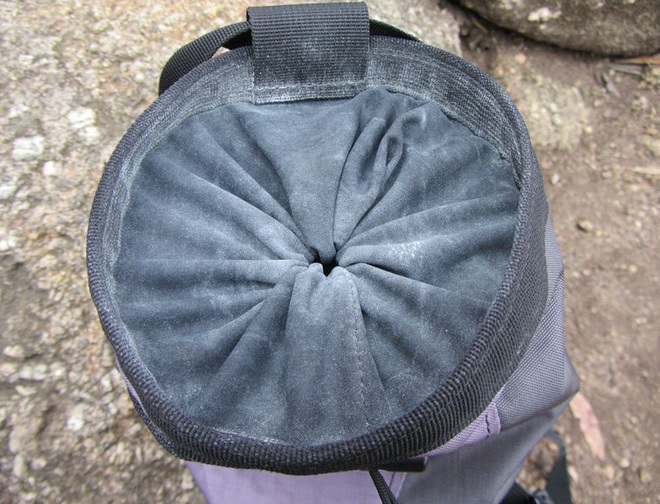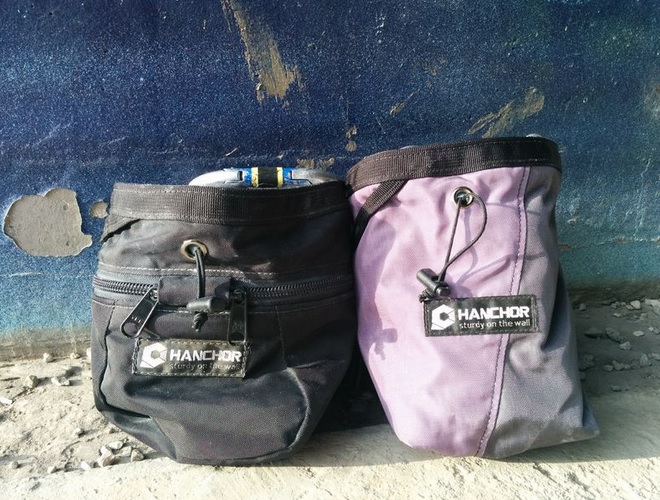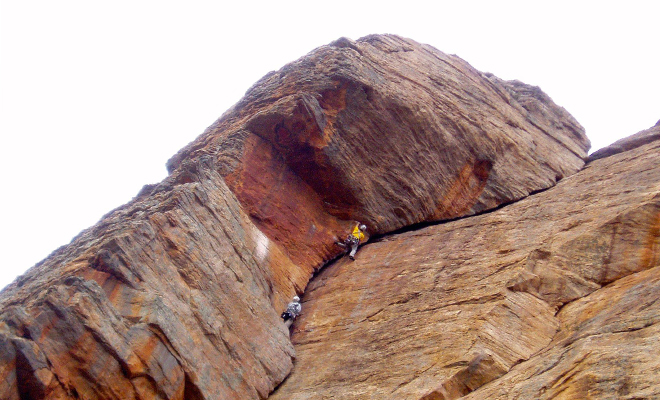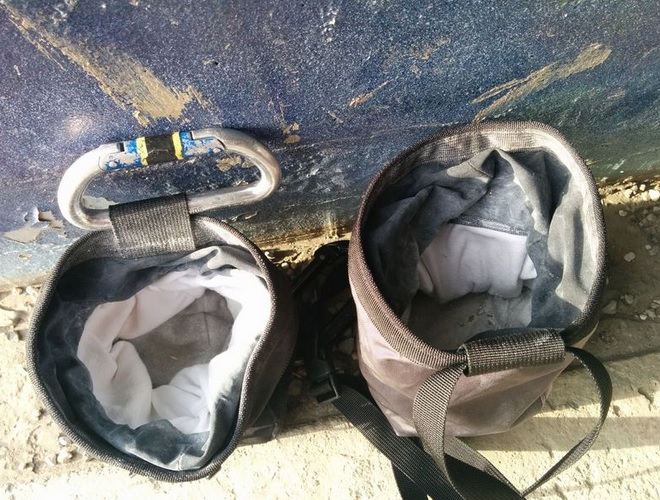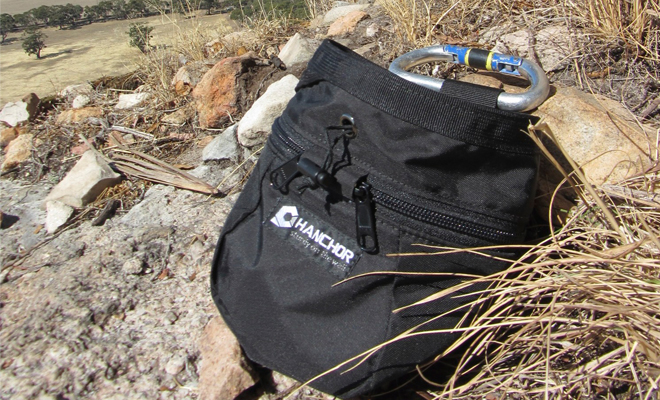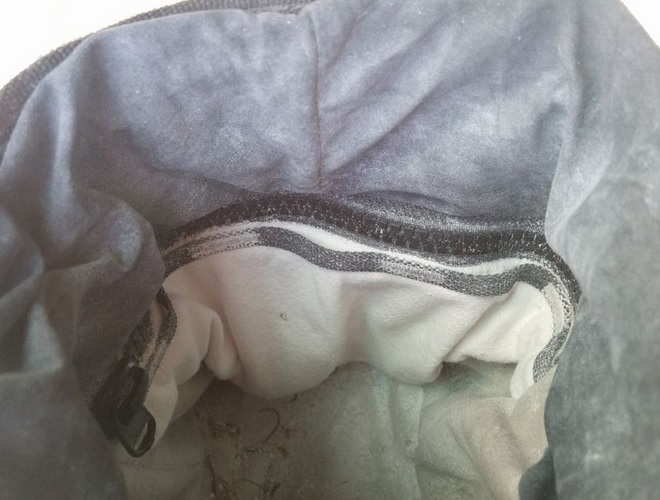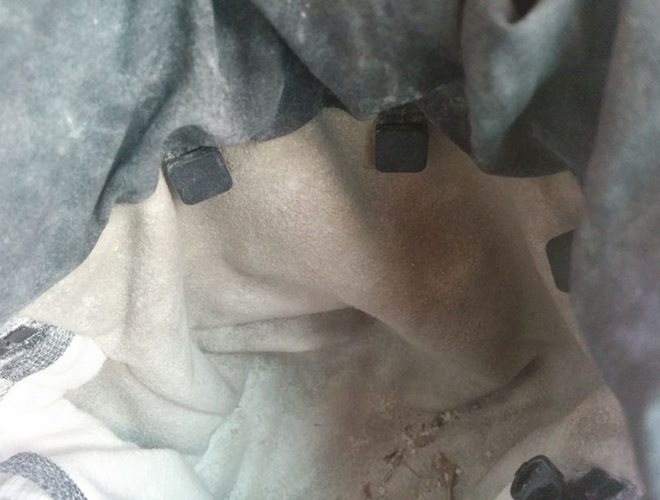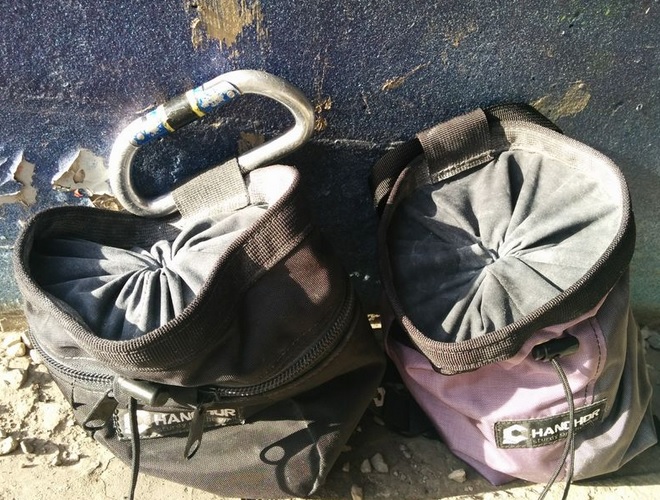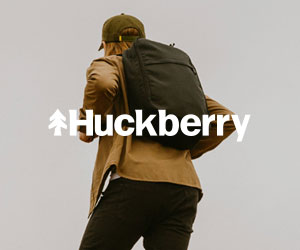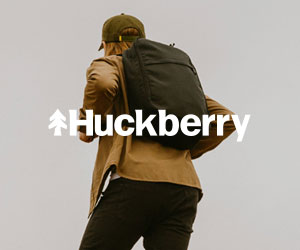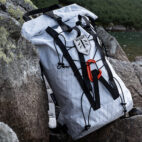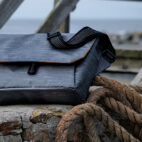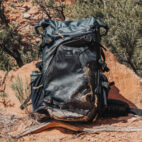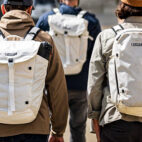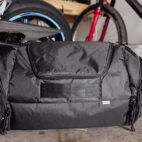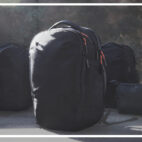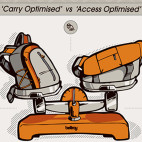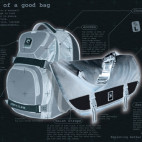Drive By :: Hanchor Chalk Bags
It’s great to see a company spending so much time improving one of the most fundamental pieces of climbing equipment – the chalk bag. This little-paid-attention-to item, that every climber owns, has been scrutinisingly improved upon by the team at Hanchor. Even their company name is an homage to this important piece of equipment, hand + anchor = Hanchor.
Their belief that a well-chalked hand makes a better anchor to the rock is shared by many climbers. Some have even gone so far as to rate the different types of chalk.
Considering how important chalk is to climbers as well as the little bags that hold them – some climbers even nickname their bags (Cotton Mouth, Cliff Slayer, Mary, etc.) – it’s surprising how little they’ve changed over the years. Other than the occasional sock re-purposed as a chalk bag, or the converted stuffed animal, most chalk bags used today are simple pouches that either hold loose chalk or hold a grabbable chalk-filled bag.
Hanchor decided to draw from conventional wisdom, keeping a pretty standard chalk bag look, but innovated upon the internal workings. They wanted to solve two problems: how do you keep your chalk ball from falling out while dangling on a heart-thumping roof section, and how could one bag be used in a chalk sock mode and a loose chalk mode.
For those who are uninitiated, chalk bags can generally be used in one of two ways. They can either have a chalk sock in them (a porous sock you can squeeze to get chalk out of) or they can hold loose chalk. The chalk sock type generally make less of a mess while the loose chalk ones give you access to a lot of chalk fast.
Hanchor decided to make iterative improvements on existing bag designs instead of going for a radical redesign. By making these small but significant improvements, they’ve been able to create something special. The two chalk bags they currently have on offer are called the Hula and the Kangaroo (see them in action here).
How I used them
I took both of Hanchor’s bags on several traditional climbing trips to the beautiful Mt. Arapiles in Victoria and ascended classic runs such as The Watchtower Crack (see below), Pilot Error, D Minor and Major, Muldoon, and Hot Flap.
The most recent trip was during the 10 glorious days we had over the Easter and Anzac Day weekends in Australia. Each was carried, used, and abused for over 2000 meters of climbing. They were also put through their paces at a couple of bouldering walls around Melbourne.
A few members of the RMIT Outdoors Club were happy to test them out as well. The feedback was almost all positive with the exception of some annoyance over the Kangaroo’s inbuilt chalk sock only being on one side.
Hula
Hanchor’s flagship bag has been constructed with a built-in chalk sock that surrounds the interior of the bag. Imagine a chalk sock that will be grabbable no matter how you reach your hand in…brilliant. This design cleverly solved the problem of having a loose chalk sock in your bag that could potentially fall out while on a climb. The material and build quality are top-notch and rugged. The fabric showed no signs of wear even after dragging it along the rock while wedging myself through a small chimney.
The pros column was long with this bag. It felt like the right size, not too big and not too small. The style was clean and humble. The draw-cord closure seals the bag well and appears to be built to last. Since we always look for ways products can be improved, I’d like to see a better system for refilling the chalk sock with chalk. The zippers to the chalk sock are on the outside of the bag, making it easy to create a mess when refilling it with chalk.
Kangaroo
With the Kangaroo Hanchor’s goal was to make a bag that could be used as both a loose chalk bag and a bag with a chalk sock. They’ve cleverly designed the built-in chalk sock to have the zipper access on the interior. They then put two fabric hoops just below the zipper of the chalk sock, and on the opposite side of the chalk bag they placed two hooks for the hoops to attach to. This construction allows you to unzip the built-in chalk sock and essentially pin it open, creating a loose chalk bag.
The hook and hoop design made it quick and easy to switch between the two modes. Not something you’d want to do mid-climb, but when you’re looking at a tough pitch where some loose chalk would be nice to have you’ll be able to switch modes and continue climbing in under a minute.
The Kangaroo has the same solid construction of the Hula. It sports the same quality draw-cord closure and has a similarly classic style to it. The nice feature you lose when compared to the Hula is the 360-degree chalk sock. The chalk sock is built into one of the interior sides of the bag, which means your hand sometimes has to search around for it. That’s the last thing you want to think about before making that super pumpy move to get you out and over the roof; however, after some use you will get used to where it sits.
Conclusion
Hanchor’s mission is to “design innovative, simple, and high-quality bags to hold your stuff for all your adventures”. They’re certainly off to a good start and have us intrigued with that last part “bags to hold your stuff for all your adventures”. What will they focus on once they’ve perfected the chalk bag?
In the next generation of Hanchor chalk bags I’d be keen to see them combine the 360-degree chalk sock design of the Hula with the “loose chalk mode” of the Kangaroo. Also, it would be cool if they built in a thin pouch that can surround the entire chalk bag while stored (like some hiking packs have built in for rain protection) to help prevent the inevitable puff of chalk that comes out every time you put your chalk bag in your pack.





 Carry Awards
Carry Awards Insights
Insights Liking
Liking Projects
Projects Interviews
Interviews
